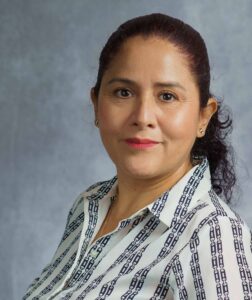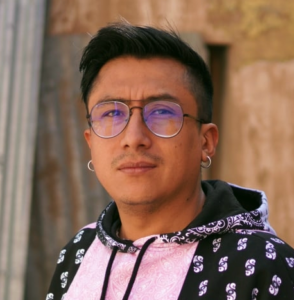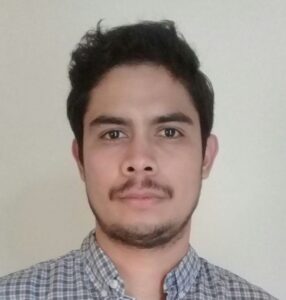As the media’s monopoly on advertising has diminished, journalistic outlets have had to find alternate sources of revenue to become financially sustainable.
This means incorporating new positions and roles within media organizations that are specifically charged with sustainability.
Media in the Global South increase their revenue six times over when there is at least one person dedicated to sustainability, as SembraMedia reported in its 2021 study, Inflection Point International.
Salaries for this role account for about 16% of the paid sales and/or business development expenses, a low cost for the benefits obtained.
Yet, it is challenging to consider sustainability tasks in an ecosystem where three out of four entrepreneurs are journalists with little business experience and prioritize content tasks, according to the same report.
While job titles vary, sustainability roles identify potential revenue streams, find clients, design plans and evaluate their development.
Sustainability tasks can be distributed in various ways depending on the stage of development, the work culture and the differential value proposition of each media outlet. Tasks include designing a business model, strategizing revenue sources, prospecting for clients, initiating relationships with clients, managing contracts, following up on services sold, and delivering invoices and final reports.
"In these years of research and analysis of independent media in Latin America, Europe, Africa and Southeast Asia, we have found consistent information about how relevant the incorporation of sales personnel is for media income," said Ana Paula Valacco, director of Project Oasis Global, which is led by SembraMedia.
Below, we highlight the experiences of eight media outlets from six countries in Latin America. They vary in age, size, legal constitution and sources of revenue.

Mariel Graupen (Courtesy SembraMedia)
Doing journalism without knowing how to generate revenue or how to manage it is a recipe for failure. To get out of this spot, it is necessary to demystify ideas such as: “money perverts journalism,” “I can do it for free,” “the money will come by itself,” “you can't make money with journalism,” etc.
“We have to get out of the scarcity mentality. To be able to do more, you have to be able to think about more,” said Mariel Graupen, senior human resources specialist and tactical advisor for SembraMedia initiatives.
La Región (Bolivia)
Founder of the Bolivian digital site on the environment and tourism, Doly Leytón, said that understanding administrative management from the beginning would have allowed her to better manage the good times.

Doly Leyton of La Región (Personal archive)
From the beginning, her tasks included money because of her sales skills developed since childhood and her experience in the publishing business. Later, she left the editorial side of things to focus on strategy and commercial operations at La Región. Currently, she is only in charge of commercial strategy there.
“After 12 years managing my media outlet, I can say that we should not romanticize the sacrifice of journalists for entrepreneurship. There is a team that gives a lot of heart that will wear out in a big way if its only return is applause. Even if it is just one person, you have to be structured,” Leytón said.
Before someone is dedicated to sustainability, tasks are done by everyone in their spare time with minimal, scattered follow-up and without deadlines. When the operation is large, the challenge is to transform the sustainability role into a specialty, provide it with equipment and professionalize its processes. They organically embrace sales, administration and finance tasks, and in some cases social media management, graphic design, marketing and technology.
La Palta (Argentina)

Gabriela Cruz of La Palta (Courtesy La Palta)
The founder of this cooperative that does journalism with a human rights focus, Gabriela Cruz, said that they incorporated sustainability tasks when they found themselves at the crossroads of growing or dying.
Initially, they divided the bureaucratic and budget tasks, but revenue generation was improvised by everyone. By participating in the Amuna accelerator program, they updated their mission and vision, and organized their processes.
They prioritized paying for sustainability tasks first because it was necessary to continue existing. These tasks were assigned to three people. The transparency of what they do in terms of sustainability is essential because they are committed to not making the mistakes of traditional media, and rather taking care of human relationships and sustainability over time.
If a media outlet is not clear about its differentiated value proposition –what sets you apart from other media–, it has no way to go out and sell anything. Other obstacles are the lack of a plan, consistency or being consumed by journalistic aspects, Graupen said.
Although some media were born with the role, others later saw the need to include it, either to strategize and/or operationalize monetization.
“Although there cannot be someone exclusively for sustainability, someone has to sell,” said Patricia Mercado, founder of Conexión Migrante of Mexico.
Another element is establishing the commission structure according to the market and keeping in mind that the people you’re incorporating must value journalism and understand it along with the flows of digital information. In addition, prepare the introduction and systematization of good practices to advance a specific business model and meet the needs of the market.
Ciper (Chile)

Cláudia Urquieta of CIPER (Courtesy SembraMedia)
Claudia Urquieta, community editor of Ciper, said she and the founders realized that the future of the investigative journalism site lay in memberships. They started with zero pesos and began doing it together.
Initially, she worked for free, then full-time combining editorial and membership duties, and finally now her sole focus is monetization.
Currently, the sustainability team she leads is 50% of the entire Ciper team. It includes social media, graphic design, membership assistance, as well as sustainability administration and management roles. They are hired full-time and indefinitely. Now there are protocols, payment monitoring and more care paid to connections with members. Having the team has led to increasing loyalty among existing members, as well as getting back and gaining new ones.
Looking for someone to fill the sustainability role can be done through open or closed searches among key actors in the profession. Being a disruptive position, it is important to pay attention to the language of the call.
The useful documents for those who select and those who apply are role descriptions and position profiles, Graupen said. The first is to understand what each person on the team does, especially when they fulfill more than one role. This will include objectives, functions, performance indicators, and duties. The second outlines the professional profile – quantifying knowledge and experience– and the personal profile so that the person fits with the values and work culture. Finding journalists with MBAs is ideal, but hard to do.
Titán Sports (Mexico)

Iveth Serna of Titan Sports (Personal archive)
Founder of this sports site, Iveth Serna, said the team went through a paradigm shift that paved the way for the search for a sales role.
They decided to first be drivers of community with valuable journalism for their audience segments; and second, sellers of comprehensive advertising services who made themselves known for their results.
They identified that they needed to strengthen the team with someone who would frame business relationships, previously initiated by journalists, and optimize the closing of contracts. They established objectives for the position and a commission structure.
During the selection process, they interviewed many digital advertising marketers and reflected on how much of their portfolios were due to the reputation of the media. They opted for a 21-year-old who complements the skills of the rest of the team who are over 35 years old – something key because they cover amateur sports and collegiate sports.
“They are the ones who best express what the media outlet does and can do,” Graupen said.
The founders and/or directors have the ability to relay the purpose, the product menu and negotiate on the fly. Other times someone on the team is trained for the strategic role. Operational matters, if possible, are resolved with in-house support or consultants for budgeting, projections, and billing.
With this dialogue, Graupen remembers a media outlet that she helped:
Conexión Migrante (Mexico)

Patricia Mercado of Conexión Migrante (Courtesy Claudia Arechiga)
For founder and general director, Patricia Mercado, it was a struggle and a discovery to take on the role of sales strategist. It was after seven years and firing two salespeople that she ended up taking it on to understand what the role requires.
It was difficult for her to accept that this meant doing less journalism, and to release her editorial team to control – and suffer – less like in the beginning when she did everything. She found that selling is not the worst and that it is similar to pitching a story to an editor.
“As a journalist responsible for sustainability, I stopped being afraid of getting money for my project to live. I discovered that I can sell. If I were to start over, I wouldn't hire anyone for strategy, but rather for operational support like I do now. To sell a media outlet, you have to know it, and no one knows it better than the person who creates it. I have already taken it on without anguish, regrets or existential doubts,” Mercado said.
Sustainability is an exercise in creativity that requires several disciplines without divides between journalism and sales to solidly reach stakeholders - who are also processing the reconfiguration of the industry.
“We need professionals who understand and value journalism but whose skills are finance, projects, technology, design, marketing. It is a strong change in culture,” said Carlos Salamanca, general manager of El Faro of El Salvador.
Meetings between areas are of different types and frequencies depending on the size of the operation and whether the decisions to be made are strategic or operational. They serve to synchronize agendas so that everyone understands what others are doing. They also help to think about products and services of value for your business model.
When there is already a product mentality, business models are designed by product with objectives, such as measuring them and making adjustments on the fly. Achievements are also shared with the team to create peace of mind, especially due to transparency in the case of horizontal teams.
El Pitazo (Venezuela)

Bárbara Lugo of El Pitazo (Courtesy Colin Rek)
Strategy and business manager, Bárbara Lugo, is in charge of memberships, donations, sales of services and marketing. She describes that they have project creation and prioritization methodologies.
On the one hand, the Ideatón is an annual event that lasts two days. Teams are assembled with representatives from each of the media outlet’s four areas – editorial, design, technology and sustainability – which have the mission of inventing a product with a business model, prototype and pitch that they sort out with work templates. Then they find a way to make it a reality.
On the other hand, they have a prioritization matrix that they learned about during their time in the Velocidad accelerator and that they adapted to their goals. There they map their products and analyze what they mean in terms of money versus effort, impact and traffic. They prioritize what requires less effort and brings more impact, more traffic and more income; and other variants. They eliminate what will require more effort and will bring in less money, less traffic and less impact.
Lugo then emphasized that their project’s results and impacts evaluated today support tomorrow's proposals and are essential for closing contracts, especially the measurement of impact in the case of grants.
Depending on its stage of growth and volume of clients, each media outlet determines when and how much to pay the role. The extremes are the cases in which the person starts without payment or the first expense is to pay for the role, be it a base salary and/or commissions for contracts as dependents or consultants. Fixed payments are especially given when saving is prioritized or when the volume of your operation is stabilized. In addition to cases where initially there is no payment and it is a shared risk.
Commission structures require complex processes to investigate the numbers of other media outlets and weigh the variations according to the types of income, the volume of income and the chosen profile.
When everyone is called to sell, the commissions go to whoever brings the client. Commissions can also be for the entire team involved in a contract.
Muy Waso (Bolivia)

Michelle Nogales of Muy Waso (Courtesy SembraMedia)
As its initial strategy, Bolivian feminist magazine Muy Waso prioritized lower base salaries in order to achieve long-term sustainability rather than sharing the initial profits, said founders Michelle Nogales and Mijail Miranda. They implemented sustainability work after participating in programs such as Amuna Digital and others.
Currently, the entire team is hired full-time and receives social benefits, and each one directs an area: Nogales the non-profit Muy Waso foundation and Miranda the for-profit Muy Waso agency; and they have a person who deals with the finances and projections.

Mijail Miranda of Muy Waso (Courtesy SembraMedia)
They have used internal regulations to establish a series of bonuses applicable to overtime, work on weekends or trips that the team needs to make to serve a client or funder.
Since the outlet is managed collectively, along with the rest of the team, they define strategic ways to manage the funds aiming for growth.
“We are committed to the mission and vision of the project, and convinced of the importance of Muy Waso in the digital media ecosystem in Bolivia,” Miranda said.
There is a paradox in sustainability between those who quickly become frustrated with metrics and revenue and abandon their media outlets versus those who maintain projects for years without revenue, Miranda said. He added that both extremes are dangerous because they do not consider sustainability.
Revenue diversification must be done on schedule, anticipating changes in decision makers of revenue sources, so that the team prepares to update its purpose and change its operation. What is fixed is that the editorial area prevails over the monetization area, while the editorial areas incorporate the product methodology.
El Faro (El Salvador)

Carlos Salamanca of El Faro (Personal archive)
Carlos Salamanca, general manager of El Faro, said that the directors set the objectives of institutionalizing the digital newspaper, developing a sustainability strategy and diversifying its funds to reduce dependence on grants. With that outlook and without anything to reference, they brought on Salamanca in 2013. He was building what his role entailed as he understood the assignment and the functioning of the editorial part, as well as sorted out the day-to-day work.
Currently, he is in charge of everything non-journalistic and supervises eight people who solve the tasks of administration, finances, audience, technology and advertising.
Since its incorporation, the amount of revenue and grants has increased. By 2019, grants went from representing 80% to 60% of the income pie. As of 2021, revenue is over US $1 million.
“We must demystify that the progress of a media outlet is to increase the number of people. Rather, growing is ordering work processes, updating objectives according to changes in the context. If that is not consolidated, adding people is a hard waste of time and money,” Nogales, from Muy Waso, pointed out.
Professionalizing sustainability tasks creates a before and after in media outlets, both at operational and strategic levels. The people who take on the tasks of generating money have collected skills around different sources of revenue with the common point that they understand the social function of journalism as the basis of a healthy democracy and generator of communities.
* The author of this article, Fabiola Gutiérrez, is a Bolivian feminist communicator based in Valencia, Spain. She writes about journalism, the internet and rights. At SembraMedia, she is an impact analyst and ambassador for Bolivia. She is co-author of Generación WiFi and Bolivia Digital, Bolivian studies on the internet and society; and La Desobediencia, a Bolivian anthology of feminist essays. She participated in Bolivian projects of disruptive journalism, such as the platform La Pública and crónicas magazine Rascacielos.